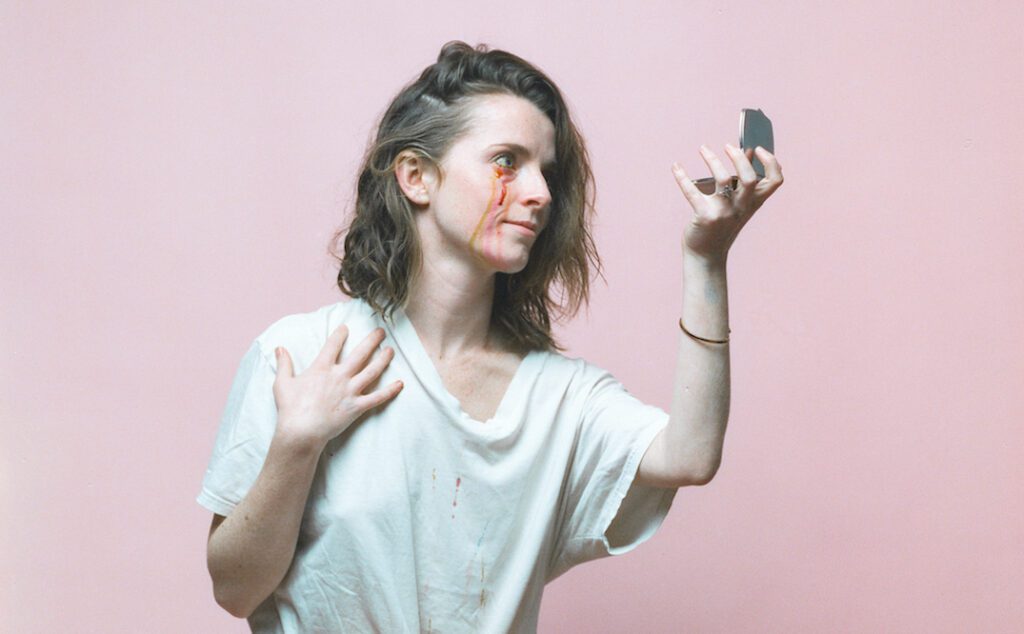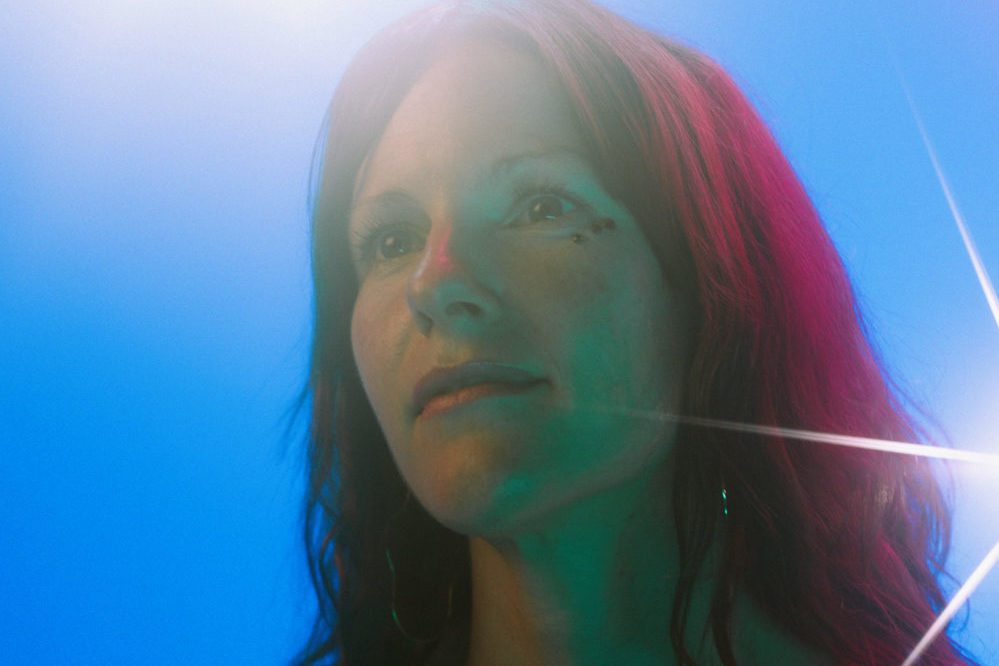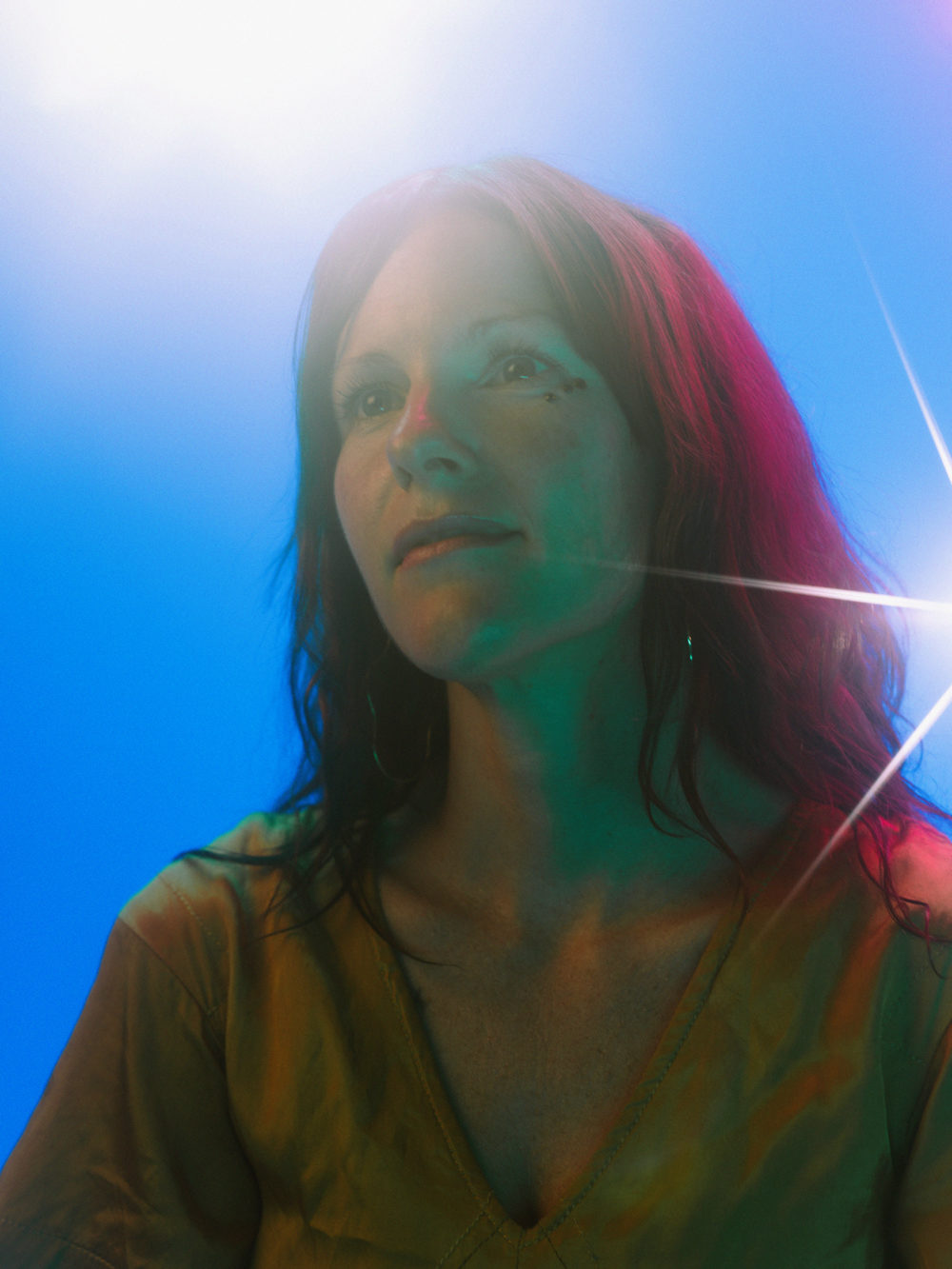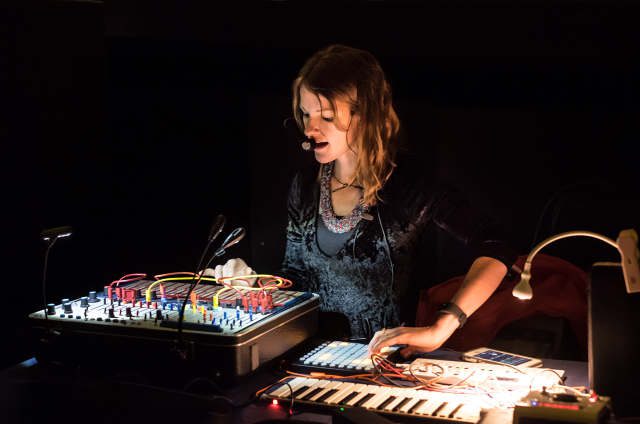RSVP HERE: Ember Knight Releases CHERYL, livestreams via Youtube + MORE


Ember Knight is a cult figure for all ages. The LA-based filmmaker, comedian and musician stretches their boundaries to create a playful and sometimes terrifying world where they can express all sides of themselves. Their sophomore album CHERYL, a ballet rock opera album, was self-released on November 10. The record is organized into movements, book- ended by odes to lasagna meals, that tells the story of a mental asylum patient who can’t remember their favorite color. The symphony is a soundtrack written for a film that doesn’t exist, was recorded entirely by Ember Knight in the Echo Park United Methodist Church, and is dedicated to your mom.
Earlier this year, Ember Knight also released a couple episodes of The Ember Knight show, a video series written by Knight and directed by Bobby McCoy that simplifies concepts like listening and telling the truth – the basics we’re taught in preschool that somehow become more complex and harder to execute as adults. Knight reminds me of a gender fluid Mr. Rogers that’s trapped in Hollywood, helping us all reflect on our bad, ego-driven behavior. Now that CHERYL has arrived, we can expect more episodes of The Ember Knight show, which will be especially helpful as we begin to integrate back into society post-pandemic at some point in the future.
Ember Knight will be celebrating the release of CHERYL with a livestream on 11/14 at 9pm ET via their youtube, and the redacted emotions Twitch. We chatted with Ember about their relationship to color, performance, and what it was like writing and recording a whole ballet themselves.
AF: Can you explain the story arc of your new album CHERYL?
EK: Yes. It’s very simple: Cheryl goes to an asylum because she can’t remember her favorite color – is it red, yellow, or blue? The doctor says, “Oh shit this is very serious – you have to stay here until you remember. And you can only eat lasagna.”
While in her hospital room, she meets the color yellow. Yellow is playful and mischievous, but also sad and tragic. When they try to play, it falls apart in front of her. Next she meets the color red. Red is innocent and enticing at first, then she becomes sexy and voluptuous, dancing with Cheryl. But just as Cheryl thinks they are about to kiss, red turns into a terrifying sexual monster of old age, and Cheryl runs away. Act break, lunch time (lasagna).
After lunch, Cheryl meets the color blue. Blue is a funny little man, who teaches her to fly and tapdance! She decides that blue is her favorite color. But as he is leaving, she realizes that he’s just a crazy beggar.
Confused and unable to answer the question, Cheryl ties her bedsheets together and escapes out the window into a Dark Night of the Soul. Now the story begins to be not simple. Anger, jealousy, everything she represses comes out in the darkness of the hospital garden. This part is all emotional logic. Something spiritual happens. When we go all the way dark, we hit the bottom, ricochet back up, and break through into the light. Cheryl cannot escape herself, and she realizes that this is okay. A favorite color is not actually necessary – all these things live within. She is caught and returned to her room, for a big operation where they cut her open and find all the colors inside.
After the operation, Cheryl goes to dinner (lasagna) and sees all of the colors sitting there, waiting for her. They eat together as a family, and the doctor lets her go. The end.
AF: How was the experience of recording the entire album yourself?
EK: Nightmare! I am a golden god, I did it, I hated it. Never Again!
AF: What was the most surprising thing you learned or discovered about yourself while writing and recording?
EK: That I cannot do ballet! I tried to “learn ballet real quick’” in order to dance the whole record in a video series. I remember thinking; okay, I have four months to be doing pirouettes en pointe, can’t be that hard! And then, you know, four months later I cannot do ONE pirouette, in my bareass feet.
And yet, it’s that exact insane “let’s go!” kinda vibe that allowed me to wanna make this record in the first place. Because I also decided to engineer it, play a grand piano, and do full string arrangements – all for the first time. How hard could it be? Well, the answer is, it was hard. It took two years and absolutely kicked my ass! But I was able to pull through on the music. The ballet got abandoned.
AF: Would you rather eat lasagna or casserole?
EK: I actually do really love lasagna. My mom used to make it, it’s one of her best dishes. But honey, lasagna for breakfast, lunch AND dinner? Too heavy, man.
AF: What is your relationship to the primary colors and the outfits that each color is represented by?
EK: Each color is a direct reference to an outfit I’ve worn exhaustively. Yellow is the Little Lion (a child’s lion costume I wore for two years in comedy), red is my sex work persona (previously just myself in a red dress, but I exploited and sold this part of myself when I danced/did escort work, and it got torn down to scrappy red lingerie), and blue is King of LA (a boy’s blue tuxedo I still wear, and have worn in The Ember Knight Show). For me, yellow represented sexless trouble, red feminine, and blue masculine. But the real moral of the record is that these are actually all facets of One Real Human – not different personas to chose between.
AF: Did you ever figure out what your favorite color is?
EK: No, the answer to the riddle is that it’s a trick question – all the colors are necessary.
AF: When you’re able to perform in front of a live audience again, what kind of venue and band would you like to perform these songs in and with?
EK: So ideally this is actually a big theatrical ballet, like the nutcracker. I’d love to arrange it for dance, or even a school production. In this fantasy I am not even directing the music; rather, someone who actually reads music is conducting and dealing with all that. I’d like to translate the lyrics into Italian and have a trained opera singer do all the main vocals, while the story is fully danced as a ballet in front of big colorful sets (probably made of cardboard).
AF: Has your approach to performing changed since you’ve had so much time to reflect this year?
EK: I think this year has made me realize that much of what I do is selfish. I want attention, I want a career, I want I want, blah blah. What does that have to do with you? Why the hell should you care?
My best answer in the past has been “I’m providing something new.” As though advancing the field, music or comedy or film, is reason enough to do it. But that’s not good enough for me anymore. I don’t need to provide something new. I want to provide something old. I want my work to be a service that provides energy, validation, and community – the age-old stuff we really need out of a performer.
After being on stage since I was three years old, it’s been really good to chill for a while. Going back into it, I’m dropping the bullshit. I’m going in to do a job, and do it well. Not beg for love.
AF: I love the Ember Knight show!! What was the process of making those episodes like and will there be more coming soon?
EK: I love The Ember Knight Show too. It’s so fun to make, a real perfect collab between me, Bobby McCoy (the director), and Mikey Santos (our DP). I think it’s the best show ever. I’m writing three more episodes for this season, and we’ll make them as soon as we have the resources! I think I’m gonna launch a Patreon for this exact thing.
AF: What is your livestream set-up like?
EK: I have acquired what can only be described as an unethical amount of fake snow. Dude, there is so much fake snow. It’s gonna be a real “mall Santa” vibe – there are hanging clouds, Christmas lights, and as mentioned, like, bounds and pounds of fake snow. So please tune in – I don’t even know if my string section can play in all of this fake snow, it’s truly irresponsible! Somebody stop me!
AF: What are your plans for the rest of 2020 + beyond?
EK: The Ember Knight Show is now my main focus. Finishing the webseries, and then banging on TV executives’ doors in the dead of night and forcing them to watch it. Something like that.
RSVP HERE for Ember Knight via their youtube, and the redacted emotions Twitch on Saturday 11/14 at 9pm ET.
More great livestreams this week…
11/13 Xiu Xiu, Ariel Pink, Machine Girl, Deli Girls, Dorian Electra, Liturgy, Kill Alters & more via Twitch. 8pm ET, RSVP HERE
11/13 Lonnie Holley & Friends (featuring Ben Sollee, Dave Eggar, Christopher Paul Stelling, Phil Faconti, Jordon Ellis & Evie Andrus) from Knoxville’s The Mill & Mine. 8pm ET, RSVP HERE
11/13 Queens of the Stone Age via YouTube. 12pm ET, RSVP HERE
11/13 -11/15 Clap Your Hands Say Yeah (solo) via Undertow. 8pm ET, $25 RSVP HERE
11/13 – 11/14 Open Mike Eagle, Robyn, Rico Nasty, Colin Stetson, Tycho, Baths, Algiers, Alex Mali, Kaitlyn Aurelia Smith, and MORE via Adult Swim Fest. RSVP HERE
11/14 Emo Night Brooklyn via LPR.tv livestream. 10pm ET, RSVP HERE
11/14 Heathered Pearls, Baltra via Elsewhere.tv. 6pm ET, RSVP HERE
11/15 Hollis Brown (tribute to The Velvet Undergound) via City Winery TV. 7pm ET, RSVP HERE
11/16 2020 Ain’t Canceled: Braggadocious Black Girl Magic via PDXWomenofColor.com. 5pm ET, RSVP HERE
11/17 Taj Mahal via Mandolin. 9pm ET, $20, RSVP HERE
11/19 Marissa Nadler, Hilary Woods via BABY/tv. 8pm ET, $5, RSVP HERE





